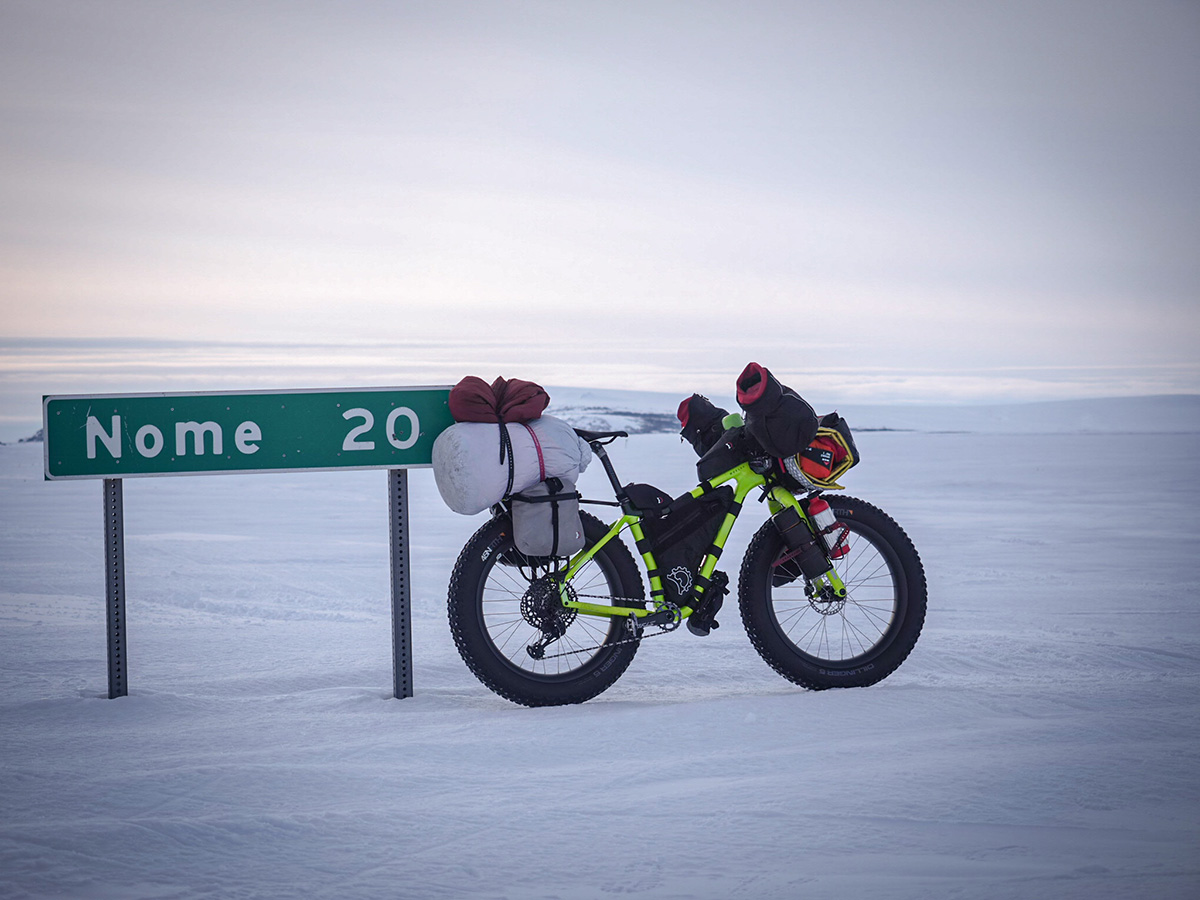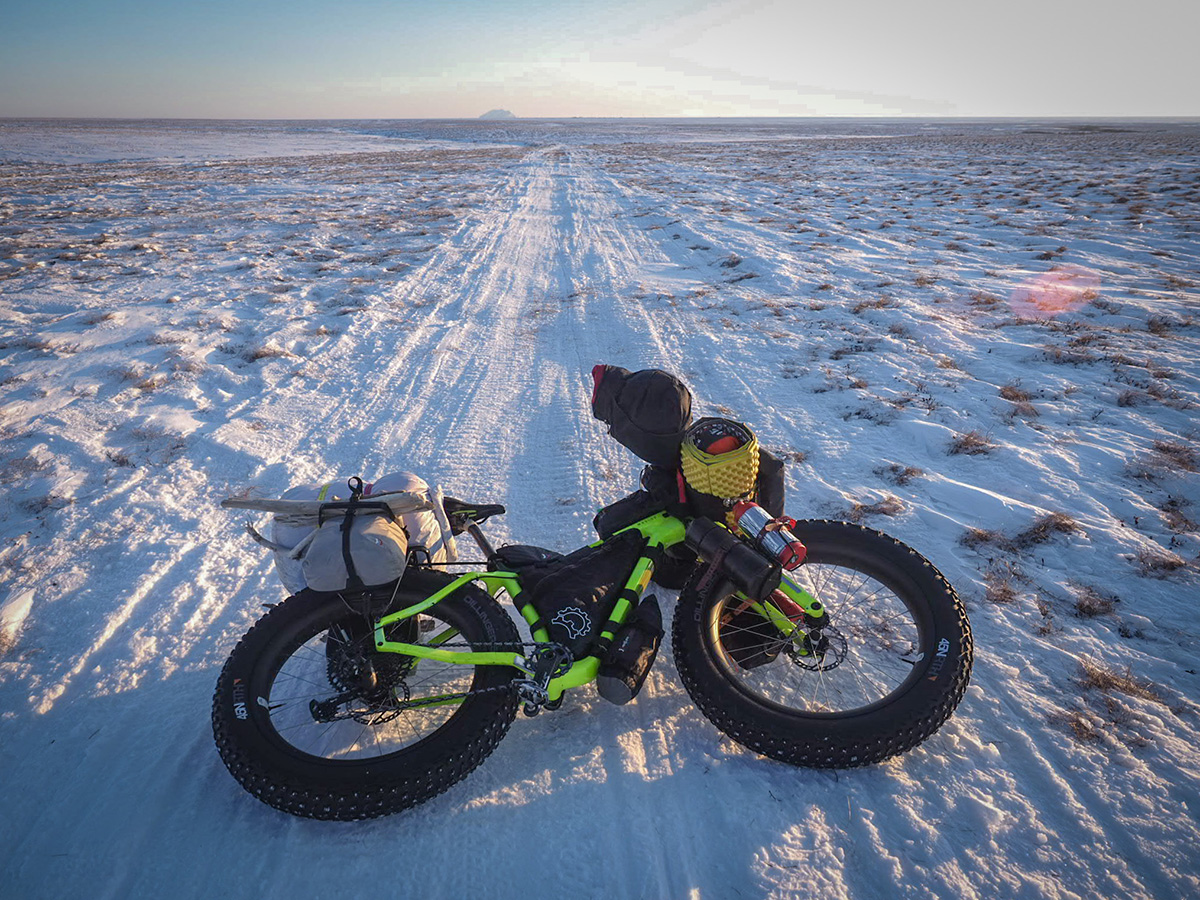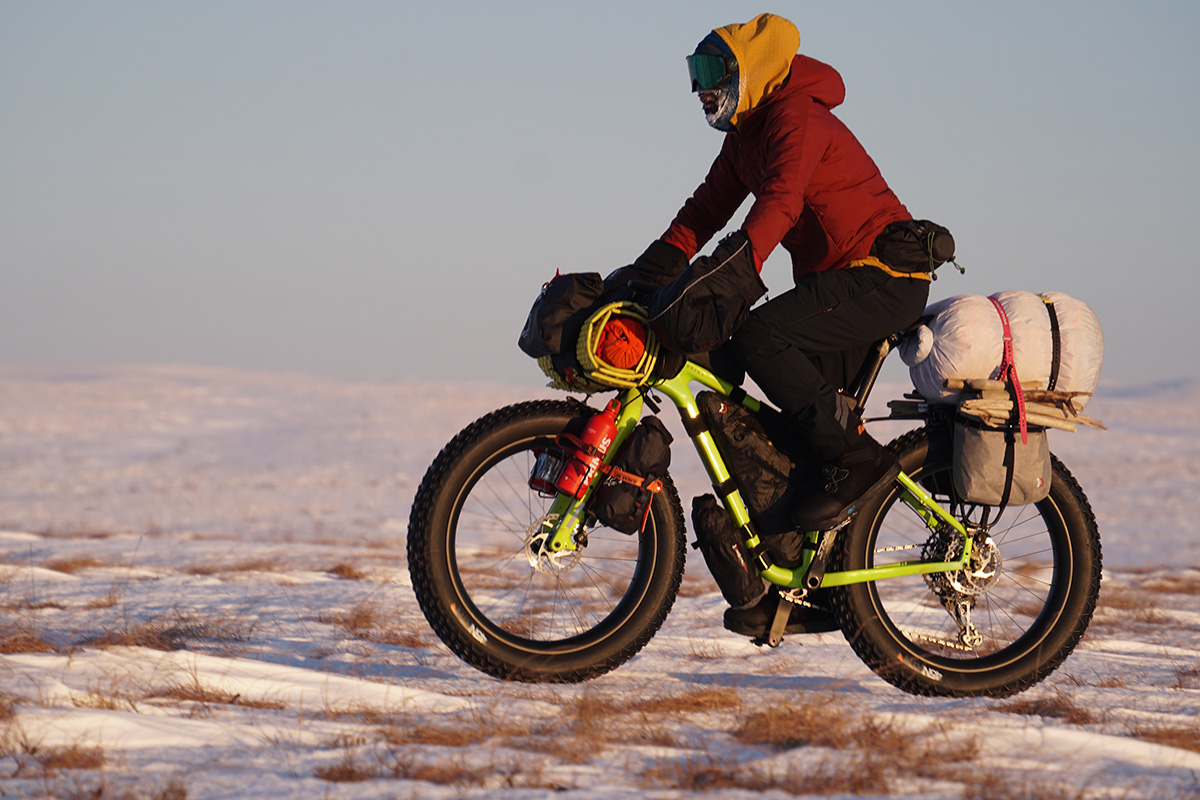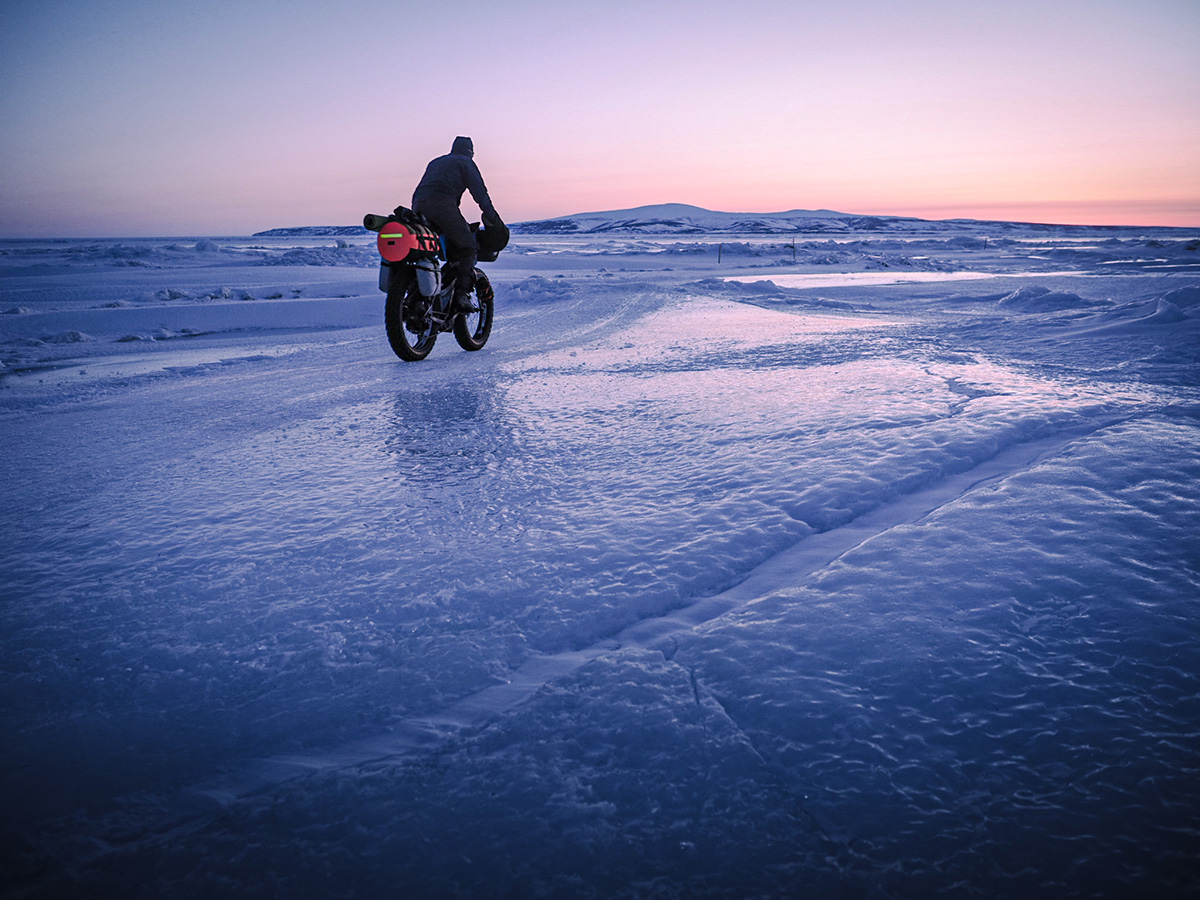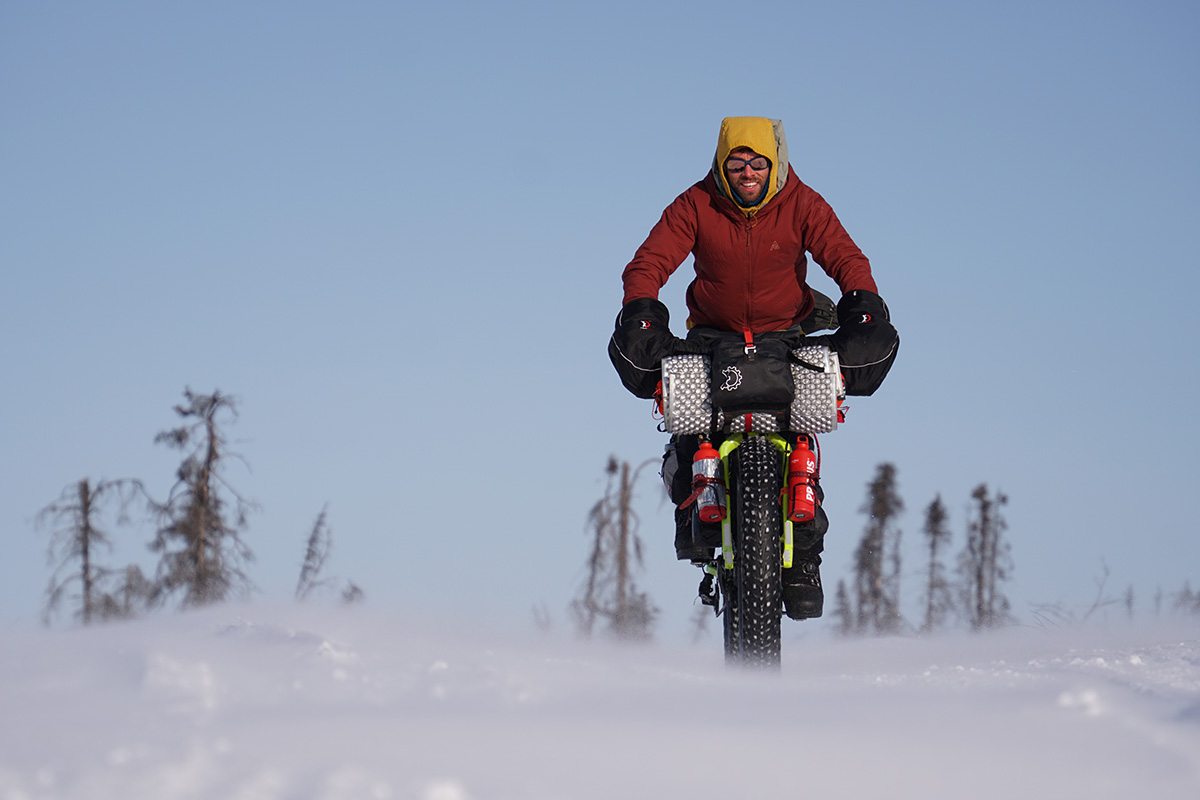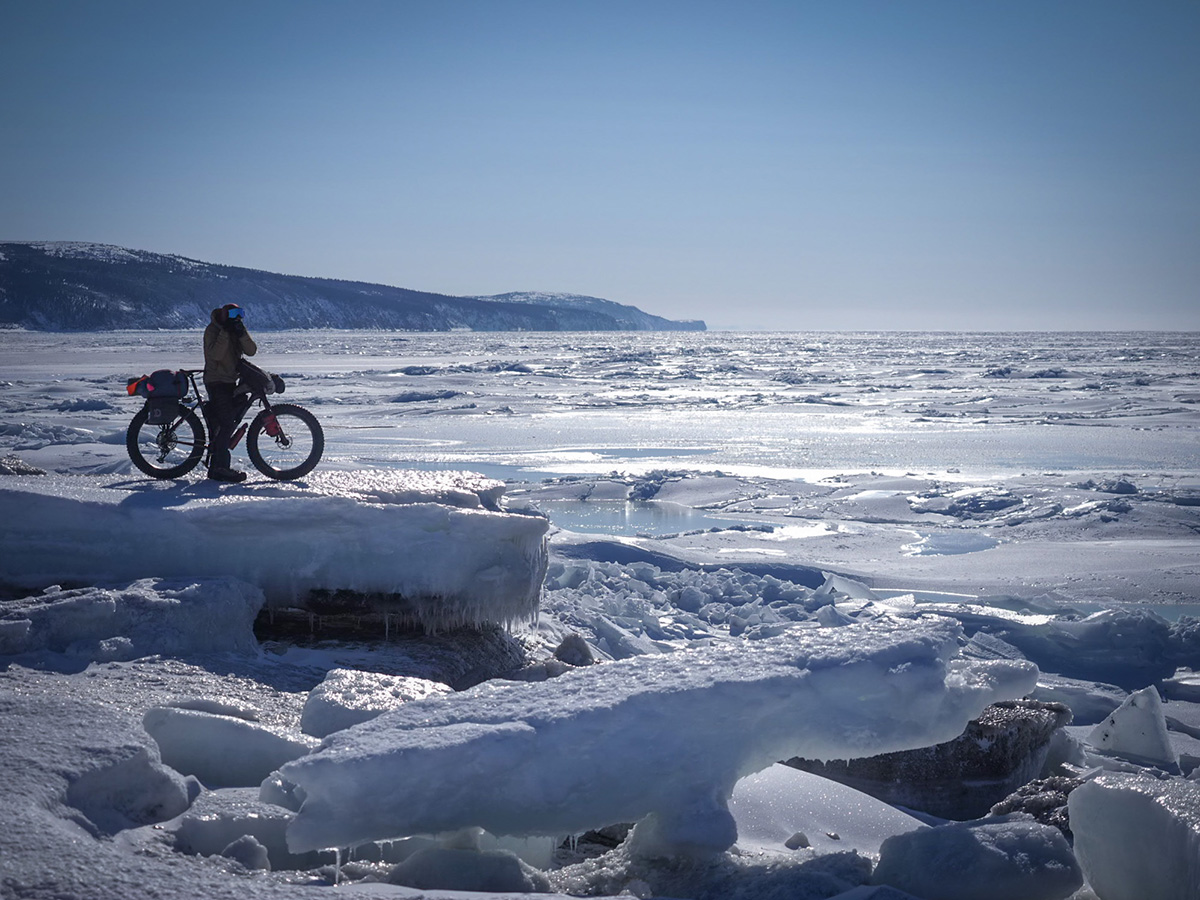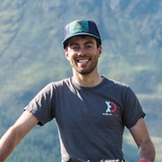Blog
stories • happenings • adventures
Gear & Tips for Touring the Iditarod
In March 2023 I rode the Iditarod Trail from Knik to Nome, crossing around 1,000 miles of Alaskan terrain over the course of three weeks, on what has got to be one of the most rewarding winter journeys anywhere in the world. The route was intimidating, but also exciting, since I learned a long time ago that I enjoy the small routines and moments of wonder that go into safe winter travel. Beforehand, I gave a lot of thought to gear choices, knowing that there was no space to take anything unnecessary, but also that remaining safe and having fun depended heavily on taking just the right things. I also noticed that there were relatively few gear lists available online to read — while everyone’s choices are different, a good old list can be a good jumping off point to inform your own decisions, and I hope this breakdown helps someone else who’s wondering whether to take this jacket or that jacket on a cold trip.
Bike
Salsa Mukluk Carbon, Medium
Salsa Alternator 197 rack
Dt Swiss 350 hubs laced to 26” Whisky Parts 84w carbon rims, 45NRTH Dillinger 5 (studded)
SRAM GX Eagle drivetrain, 10-52 cassette, 26t chainring
Hope X2 brakes
ESI silicone grips with big, ugly bar-ends, all covered in a wrap of bar tape to give lots of big, squishy hand positions inside the pogies.
Before setting off, I gave the bike a complete overhaul (obviously!) and flushed every bearing before replacing the original grease with low-temperature grease.
Bike bags
Revelate Mukluk Carbon frame bag
Revelate Expedition pogies
Harness
Nano panniers
Mag-tank 2000
Egress pocket
Jerrycan
2 x Mountain feed bags
Polecat fork bags
Joey downtube bag
Ginormous custom rack bag
Camping gear
MSR Advance Pro 2 tent, 6 x MSR snow stakes
Rab Expedition 1400 sleeping bag
Rab vapour barrier bag liner
Therm-A-Rest NeoAir X-Therm sleeping mat
Therm-A-Rest Z-Lite Sol foam mat
Primus Omnilite Ti multi-fuel stove, plus pump/stove service kits
2 x 1l Primus fuel bottles
2 x 750ml Primus flasks
500ml Nalgene bottle
Sea to Summit collapsible mug and bowl
Titanium spork
Clothing and footwear
Top
7Mesh Outflow insulated hoody
7Mesh Chilco anorak
7Mesh Chilco neckwarmer
7Mesh Northwoods windshell
Patagonia capilene thermal hooded baselayer
Patagonia Fitzroy down hoody
Rab Generator Alpine belay jacket (the only thing that I wouldn’t bring again)
Black Diamond Superlight mitts (actually maybe these too, they were too bulky)
Rab Phantom gloves
Random MEC puffy mitts for emergencies
Julbo Photochromic goggles
Spare grid-fleece baselayer
Windproof face mask with silicone mouthpiece for ultra-chilly times
Various neckwarmers
Bottom
7Mesh liner shorts
Mountain Equipment Compressor insulated pants
45NRTH Wolfgar boots fitted with Intuition ski boot liners
45NRTH Naughtvind pant
Mountain Equipment Kinesis baselayer pant
RBH Designs vapour barrier/insulated socks
Wiggy’s waders (lightweight waders for dealing with overflow/open water)
Exped down booties
Spare pair of socks for camp
Other equipment
Olympus EM1 MKii, f2.8 12-40mm lens, f4.0-5.6 40-150mm lens
3 spare camera batteries
Mindshift camera bum bag
Garmin Inreach Messenger satellite communicator
Petzl Swift RL head torch, plus 2 spare rechargeable batteries
Rear blinky light
10,000 mAh battery pack, plus leads for devices
A Kindle!
Garmin eTrex 30x GPS + spare lithium batteries
First aid kit
The usual tools and spares: multi-tool with chain tool, small pliers, spoke key, pump, one spare tube, tyre sewing kit, chain links plus a small length of chain, gorilla tape, zip ties, spare pulley wheels and spare valve cores. Compatible spares for most bolts on the bike not as many as you would think), and SPARE RACK BOLTS.
Food and drink
Space and weight is always a priority when multiple days of food need to be carried, and with so much gear weight already on the bikes this becomes especially important. However, calories are fuel, and on winter trips more are needed as the body turns up the thermostat to cope with the cold! The bottom line is that without enough calories you’re going nowhere, so I tried to pack the most calorie-dense food I could to save weight and space, but if in doubt I stuck in that extra bar of chocolate since I knew it would be appreciated one cold night.
Breakfast:
Porridge! The Scottish classic, with calories added by cocoa powder, coconut oil, nuts, seeds and peanut butter. With a flask of coffee/hot chocolate mix to drink while packing away camp.
Lunch/snacks:
These were usually eaten in several short stops through the day, unless we were lucky and found a handy cabin. Things like peanut M&M’s, caramel nuts and bars give a quick hit of sugar along with some carbs and fat to keep energy levels relatively constant. I don’t usually eat much meat, but got a weird craving for jerky after a week or so, and when we were gifted a bag of dried king salmon by one of the mushers I found that extra tasty, despite it making me and my frame bag smell a bit fishy. Hot, sugary drinks are a good boost for morale as well as energy, so I always set off in the morning with some apple juice or hot chocolate in a flask. I think the hot chocolate sachets became my most prized possessions as time went on.
Dinner:
The main event! Honestly, by the time we made camp in the evening (or more often the night time) I had been fantasising about dinner for several hours. I did take a few of those fancy, freeze-dried meals with me, but the very best meals I ate were some spares that Nick donated after one of my food parcels went awol. You can make it at home! You’ll need: a packet of instant mashed potato (ideally cheese and garlic), a handful of bacon, and a stick of butter. Get yourself cold and hungry, add hot water, stir, and melt into buttery ecstasy. I don’t think anything I ever eat will taste so good. Little random treats, like some cheese, or a bar of chocolate, made very good midnight snacks, or as a little pick-me-up after a hard day.
Wins from the trail
Overall, the combination of kit that I took worked very well with few regrets. The majority of it was tried and tested gear that I’ve used before, with most of the indecision down to which combination of layers would be warm enough for interior Alaska. Coming from a horribly damp maritime climate, it’s always surprising how little clothing can keep you warm in nice, dry winter conditions, as long as you’re working. In camp, I was always warm enough, and the various bits of camping gear were all remarkable only for the lack of drama. Here are a few standout wins from bits of gear that made me smile more than expected:
My Kindle!
For something small, light and hassle-free, my Kindle brought me a lot of joy curled up in my sleeping bag in the evenings. Reading a book gives me a chance to be still and digest the day’s events, and thankfully the battery and screen deal very well with cold. My favourite read from this trip was Of Wolves and Men, by Barry Lopez.
The Mega -Flask
One of my Primus flasks is wrapped, top, bottom and sides, in foil-backed insulating foam. It turns an already good flask into a very good one, and kept water almost boiling hot all the way through to dinner time, if I didn’t drink it first. That allowed me to get a cup of tea or some noodles before getting the stove out, which is a big win when you’re about to keel over.
Pogies
With their fleece liners, the Expedition pogies always feel quite exciting to attach to the bars ahead of a trip. I have never once had cold hands in them, and after a couple of weeks completely lost track of what I had stashed down the bottom and in the pockets, so I was always finding a random sweet or chocolate to brighten a low moment.
Primus stove
There’s something comforting about getting a Primus stove lit and roaring away while you set about making a home for the night. While a lot of modern gear is very refined and requires minimal faff, a multi-fuel stove requires assembly, pumping, priming and your absolute attention to get it roaring away with a happy blue flame. The noise and heat made it feel like an extra member of the team at times. We needed our stoves to provide all of our water between villages, so the beautiful simplicity of cooking on them felt like a reminder of how rewarding it is to travel self-sufficiently in winter.
Spare neckwarmers
This one is quite specific, but it’s true that you can never have too many spare hats or neckwarmers. One day while we were crossing sea ice on the way to Koyuk, the cold wind was blowing across the ice at just the right angle to into all the gaps between layers and zippers, and I suddenly found myself in need of a neckwarmer to shove down the front of my pants before one particularly sensitive area got frostbitten… So from now on there will be an extra spare in case of that same thing happening again!
Fails (not everything goes exactly to plan)
Food, or lack of
One of my food parcels didn’t make it to McGrath. We never found out what happened to it as it didn’t get returned to sender either, it just evaporated into the ether of the US Postal Service. Since it had about $200 worth of food that I’d painstakingly packed, labelled and looked forward to, this was a little bit sad.
Stinky feet
I only took 1 pair of riding socks, which were a very weird and specific combination of waterproof barrier (to stop sweat saturating the boots’ insulation) and fleece. They worked incredibly well, and I never struggled with cold feet, but the smell… I wouldn’t have ever guessed that my own feet could make a smell bad enough to make me gag, but now I know better!
Gloves (too cold or sausage fingers)
Hands and feet are the hardest things to keep happy in the cold. I can generally keep my feet happy for the most part, but I’ve never found just the right gloves for camping in the cold. Fleece gloves are dexterous enough to do stove chores without setting fire to myself, but are too cold and lead to a lot of faffing about trying to warm up. I took some light, very warm mitts on this trip, but quickly realized that they were too fat to do anything except the most basic chores with.
It amazes me sometimes to think that for three weeks, all this gear plus a maximum of 6 day’s food was packed onto my bike, and we trundled together across such a big landscape. While we each travelled self-sufficiently to build redundancy into our plans, it would have been a lot less fun without the company of Kurt and Nick from McGrath onwards — the gear you pack doesn’t make things fun, it just gets you to the places where the fun happens. Feel free to reach out with questions if you’re planning a trip of your own to cold places. Kurt has also put together this incredible route guide, to share the things we learned about planning a tour on the Iditarod Trail. Check it out!
Huw’s favorite thing to read is a map – when he moved across the border to Scotland, the first thing he did was buy one. Bikes are a good way to check that the map wasn’t lying, and the resulting trips have taken him to nearly every bog in Scotland, to Patagonia, Nepal and Arctic Lapland. The odd bikepacking race thrown in for good measure keeps him honest. More recently, the addition of a packraft meant that even the blue bits of the map are fair game! Occasionally, he works as an outdoor educator and mountain bike coach, hoping to show other people why they ought to read more maps, too. His blog is Topofests.com.

